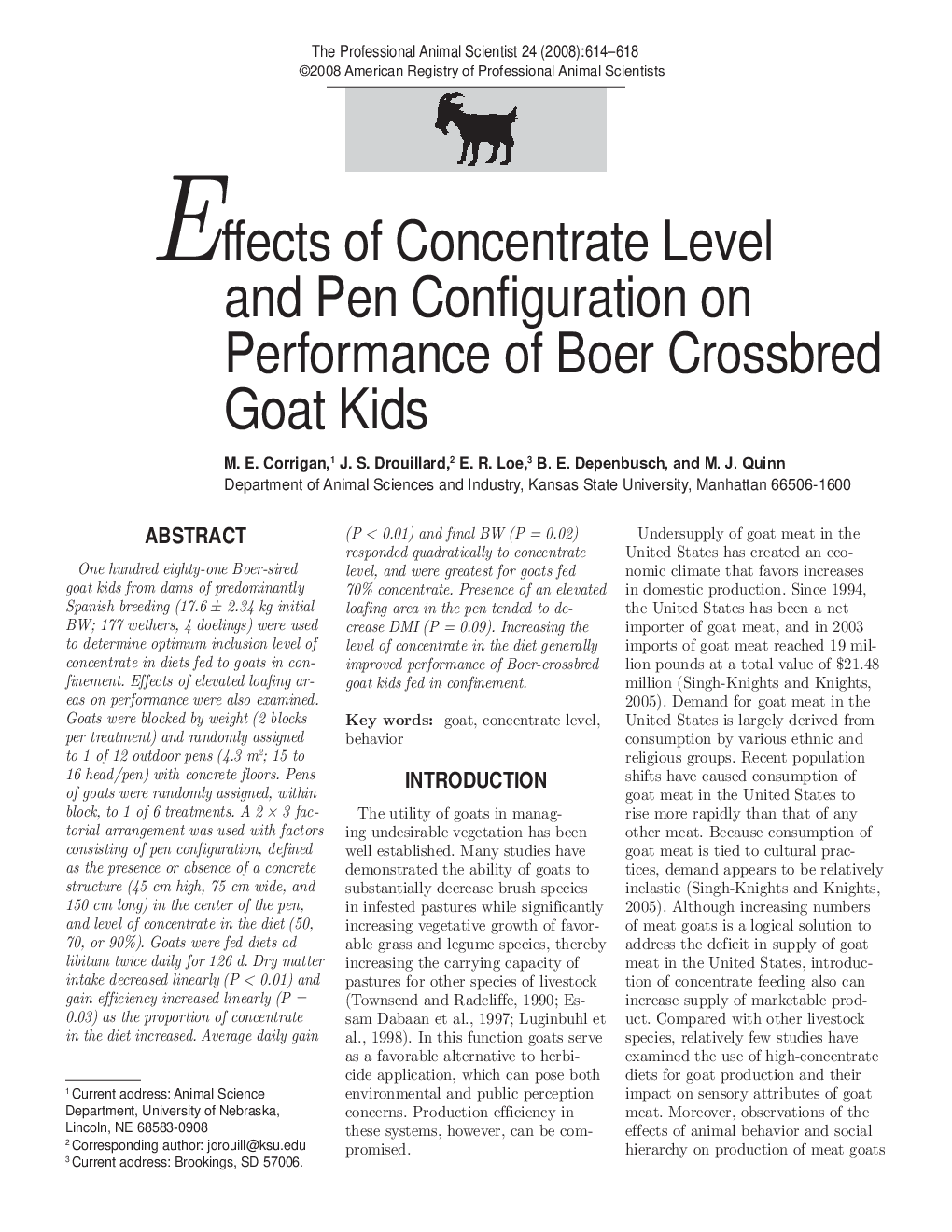| Article ID | Journal | Published Year | Pages | File Type |
|---|---|---|---|---|
| 2454535 | The Professional Animal Scientist | 2008 | 5 Pages |
Abstract
One hundred eighty-one Boer-sired goat kids from dams of predominantly Spanish breeding (17.6 ± 2.34 kg initial BW; 177 wethers, 4 doelings) were used to determine optimum inclusion level of concentrate in diets fed to goats in confinement. Effects of elevated loafing areas on performance were also examined. Goats were blocked by weight (2 blocks per treatment) and randomly assigned to 1 of 12 outdoor pens (4.3 m2; 15 to 16 head/pen) with concrete floors. Pens of goats were randomly assigned, within block, to 1 of 6 treatments. A 2 à 3 factorial arrangement was used with factors consisting of pen configuration, defined as the presence or absence of a concrete structure (45 cm high, 75 cm wide, and 150 cm long) in the center of the pen, and level of concentrate in the diet (50, 70, or 90%). Goats were fed diets ad libitum twice daily for 126 d. Dry matter intake decreased linearly (P < 0.01) and gain efficiency increased linearly (P = 0.03) as the proportion of concentrate in the diet increased. Average daily gain (P < 0.01) and final BW (P = 0.02) responded quadratically to concentrate level, and were greatest for goats fed 70% concentrate. Presence of an elevated loafing area in the pen tended to decrease DMI (P = 0.09). Increasing the level of concentrate in the diet generally improved performance of Boer-crossbred goat kids fed in confinement.
Keywords
Related Topics
Life Sciences
Agricultural and Biological Sciences
Animal Science and Zoology
Authors
M.E. Corrigan, J.S. Drouillard, E.R. Loe, B.E. Depenbusch, M.J. Quinn,
